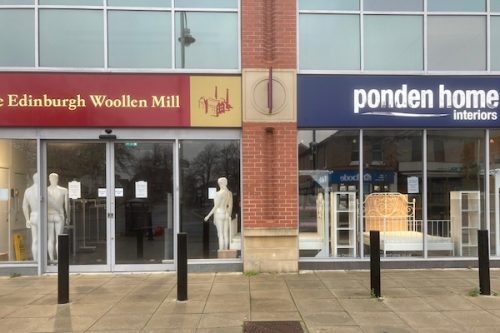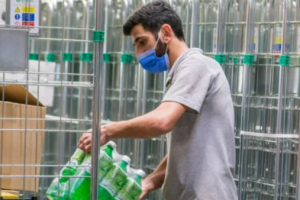North West sees store closures accelerate, with more casualties predicted

More than 17,500 chain stores closed across the UK in 2020, including 2,065 across the North West, with the full impact of the pandemic yet to be felt.
In total, 7,655 shops opened, compared with 17,532 closures, a net decline of 9,877, according to PwC research compiled by the Local Data Company (LDC).
Although a decline was to be expected in a pandemic, this is the worst ever seen with an average of 48 chain stores closing every day, and only 21 opening.
The findings starkly compare with five years ago in 2015, which showed North West store openings at 1,399, and store closures at 1,614 – a net fall of just 215 stores compared with 2020 which saw a net fall of 1,133 outlets.
The categories of outlets most affected by closures across the North West were fashion retailers, betting shops, pubs and bars, food to go, electrical shops, banks and financial services, estate agents, restaurants and mobile phone shops.
Among the high profile casualties were department store group Debenhams, and the Carlisle-based Edinburgh Woollen Mill, which lost 119 stores and hundreds of jobs before being bought out of administration.
Worryingly, the real impact of the pandemic is yet to be felt as some stores ‘temporarily closed’ during lockdowns, but considered as open in the research, are unlikely to return.
But while the full impact of COVID-19 on store closures remains to be seen, its effect on consumer behaviours are driving changes.
Retail parks have seen the smallest number of net closures of any location (58) in the North West, compared with high streets (405), shopping centres (221) and, faring worst of all, standalone stores (449).
Footfall was already holding up better in retail parks before the pandemic due to their investment in leisure, and some retail parks have benefitted by being anchored by essential retailers that have remained open, even during the tightest restrictions.
But it’s also because they’re considered safer in the current environment. Free parking means it’s possible to drive to the location, and avoid public transport, outdoor areas mean reduced indoor mixing and larger units allow for better social distancing measures.
Shopping centres, by contrast, are often poorly located for consumers who want to shop local and travel less to city centre and are more likely to host fashion retailers and chain restaurants, which are the number one and thee most hard hit categories for net closure in 2020.
Meanwhile, the drop off in high street footfall has affected those multiple retailers located on high streets, particularly those in large city centres. However, this decline in multiples has been somewhat offset by growth in interest of local and independent operators.
Small towns, which have long been in decline at the expense of more populous areas and cities, are now also enjoying a mini renaissance. Consumers now want to shop in these locations, and larger retailers want to be there.
There is greater regional disparity this year. Looking at absolute figures, London, South East and the North West have seen the most closures – unsurprising given these regions have more chain stores.
However, London has undoubtedly been hit harder than other regions, with a record 5.8% increase in net closures this year.
Lisa Hooker, consumer markets lead at PwC, said: “For the first time, we’re seeing a widening gap between different types of locations: City centres and shopping centres are faltering, but certain retail parks, with the right customer appeal, are prospering.
“Location is more important than ever as we see a reversal of historical trends. For years, multiple operators have opened more sites in cities and closed units in smaller towns. As consumer behaviours and location preferences change, partly as a result of COVID-19, retailers are moving to be where they need to be.
“Small towns will remain important but we can expect recovery in cities as workers and tourists return, albeit in smaller numbers adopting more flexible working models.”
She said the full extent of the impact on retail will be revealed in the coming months as many of the CVAs (company voluntary arrangement) and administrations in the early part of 2021 still haven’t been captured, including department stores, fashion retailers and hospitality operators that will leave big holes in city centre locations.
But she added: “However, there will be big opportunities for growth into the gaps that are emerging. After the global financial crisis we saw growth of discounters and foodservice chains that replaced exiting retailers. There is an opportunity for operators who can find the right location at the right time to thrive, even despite the current uncertainty.”







